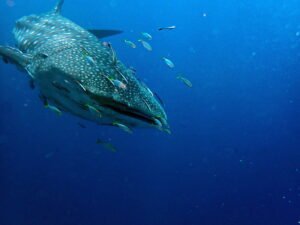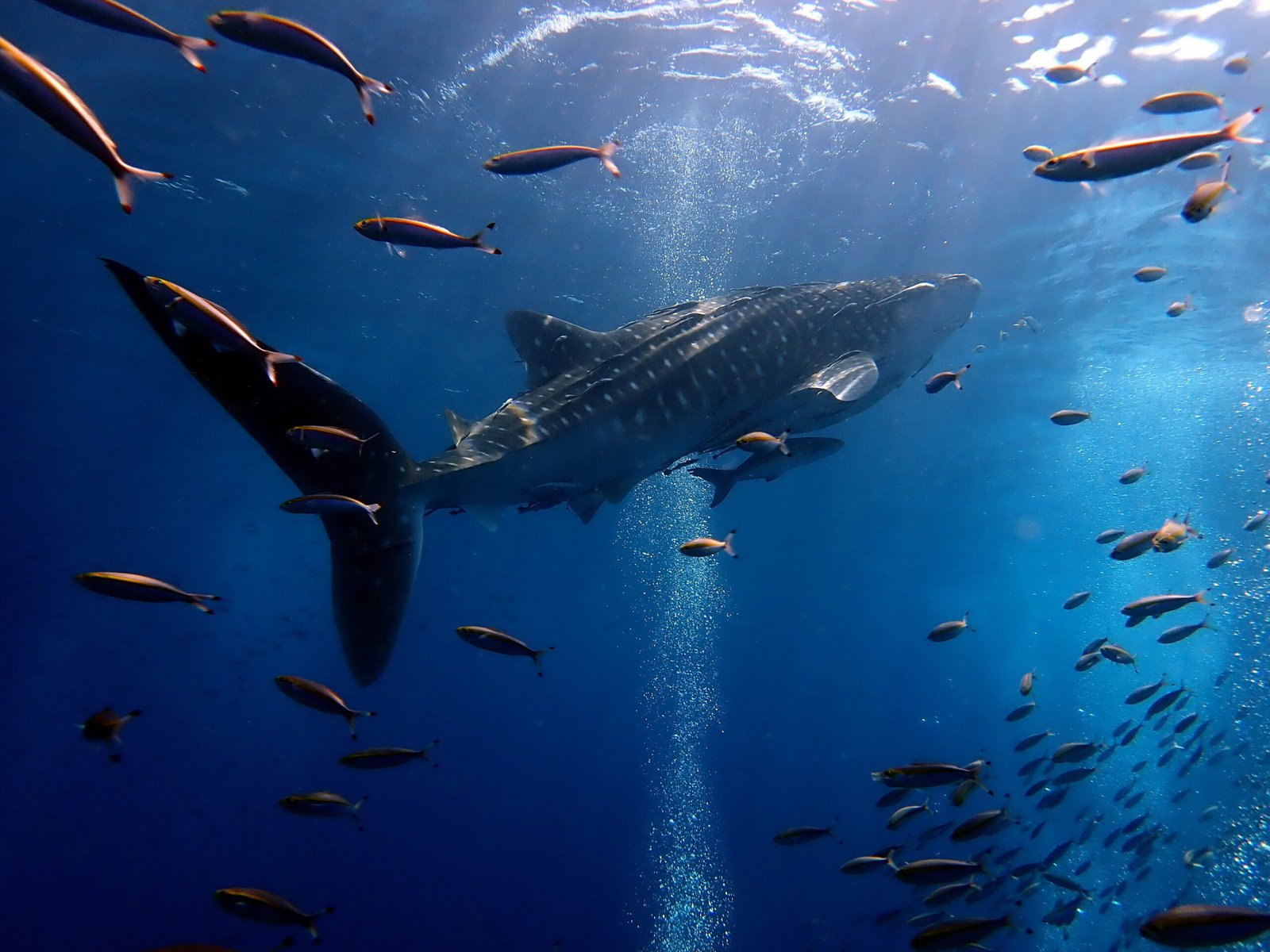Whale sharks are not only known for their impressive size, but also for their ability to navigate vast distances during their annual migrations. These migrations are essential for their survival, as they allow the whale sharks to follow food sources and find suitable breeding grounds.
One of the key factors that influence the migration routes of whale sharks is ocean currents. These powerful currents can carry the whale sharks over long distances, allowing them to travel efficiently and conserve energy. The whale sharks are also known to use these currents strategically, riding them to areas where food is abundant.
Water temperature is another crucial factor that influences the migration patterns of whale sharks. These gentle giants prefer warmer waters, as they provide optimal conditions for feeding and reproduction. As the seasons change and water temperatures fluctuate, the whale sharks adjust their migration routes accordingly, seeking out areas with the most favorable temperatures.
The availability of food sources is perhaps the most significant factor that determines the migration routes of whale sharks. These filter-feeders primarily rely on plankton and small fish for sustenance. They are known to follow plankton blooms, which occur when nutrient-rich waters promote the rapid growth of microscopic organisms. These blooms attract large numbers of plankton, which in turn attract the whale sharks.
Whale sharks are highly adaptable creatures, capable of adjusting their migration routes to take advantage of changing food sources. This flexibility allows them to thrive in different regions of the world, from the Western Atlantic to the Eastern Pacific. It also makes them vulnerable to environmental changes, as disruptions in food availability can have a significant impact on their populations.
Understanding the migration routes of whale sharks is crucial for their conservation. By tracking their movements and studying their behavior, scientists can gain valuable insights into their habitat preferences and the threats they face along their migratory paths. This knowledge can then be used to develop effective conservation strategies and ensure the long-term survival of these magnificent creatures.
Feeding Habits of Whale Sharks
Whale sharks are fascinating creatures with unique feeding habits. As filter feeders, they have evolved an efficient method to extract their food from the vast oceanic expanse. Despite their enormous size, their diet primarily consists of tiny organisms such as plankton, krill, and small fish.
When it comes to feeding, whale sharks employ a remarkable mechanism that sets them apart from other marine species. They open their large mouths wide, creating a cavernous opening capable of engulfing an immense volume of water. Once their mouths are full, they skillfully close them and begin the intricate process of filtering out the food particles.
Within the gills of a whale shark, there are specialized structures known as gill rakers. These delicate and intricate formations act as a fine sieve, allowing the water to pass through while capturing the microscopic organisms that serve as their sustenance. The filtered water is then expelled through the gill slits, leaving behind a nutritious meal for the whale shark.
Interestingly, whale sharks possess rows of small, pointed teeth. However, these teeth are not utilized for chewing or tearing prey. Instead, they are believed to be vestigial and play no significant role in the feeding process. The primary method of feeding for whale sharks is suction feeding, where they create a vacuum-like effect to draw in water and food.
Despite their massive size and the need for substantial amounts of food, whale sharks are known for their gentle nature. They are not aggressive predators and exhibit a docile behavior that allows divers and snorkelers to swim alongside them. This unique characteristic, coupled with their filter-feeding diet, renders them harmless to humans, making them a popular attraction for those seeking a memorable underwater experience.
Life Span of Whale Sharks
Estimating the life span of whale sharks is a challenging task due to their elusive nature and long migration patterns. However, scientists believe that whale sharks can live for up to 70 years or more. This estimate is based on studies that involve tagging and tracking individual whale sharks over extended periods of time.
Whale sharks have a slow growth rate, and it takes several years for them to reach sexual maturity. Females are believed to reach maturity at around 30 years of age, while males reach maturity at around 20 years. Once they reach maturity, whale sharks can reproduce and give birth to live young.
Despite their large size and long life span, whale sharks face various threats, including habitat destruction, pollution, and accidental capture in fishing nets. Conservation efforts are crucial to protect these magnificent creatures and ensure their survival for future generations.
In conclusion, whale sharks are fascinating creatures with unique migration routes, feeding habits, and long life spans. Their migration patterns take them across oceans and continents in search of food and suitable mating grounds. As filter feeders, they consume tiny organisms by filtering large amounts of water. Despite their massive size, they are harmless to humans and have a gentle nature. Protecting these gentle giants is essential to preserve their populations and the marine ecosystems they inhabit.
marine ecosystems they inhabit.
One of the most remarkable aspects of whale sharks is their ability to migrate over vast distances. They are known to travel thousands of miles, crossing entire oceans and even traversing multiple continents. These migrations are driven by the search for food and suitable breeding grounds.
Whale sharks are primarily found in tropical and warm-temperate waters, where they have access to abundant planktonic food sources. During their migrations, they follow the seasonal movements of plankton blooms, which provide them with a consistent food supply.
These migrations are not only impressive in terms of distance covered but also in terms of the time it takes for whale sharks to complete them. Some individuals have been tracked for months or even years, revealing their incredible endurance and navigational abilities.
Scientists have used various methods to track the movements of whale sharks. One common approach is to attach satellite tags to the sharks’ dorsal fins. These tags transmit data on the sharks’ location, depth, and water temperature, allowing researchers to monitor their movements in real-time.
Through these tracking efforts, scientists have discovered that whale sharks often return to the same feeding and breeding grounds year after year. This fidelity to specific locations suggests that these areas are crucial for the survival and reproductive success of the species.
Understanding the migration patterns of whale sharks is essential for their conservation. By identifying and protecting the key habitats they rely on, we can ensure the long-term survival of these magnificent creatures. Additionally, studying their migrations can provide valuable insights into the health of the marine ecosystems they inhabit.
